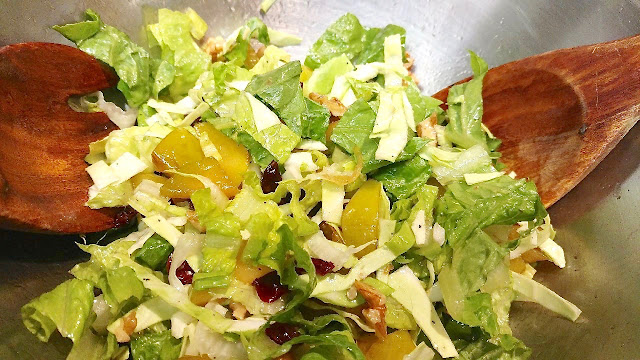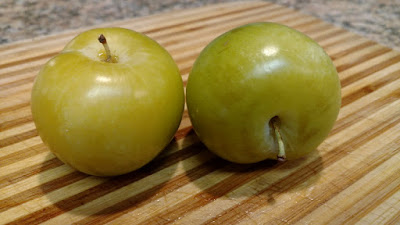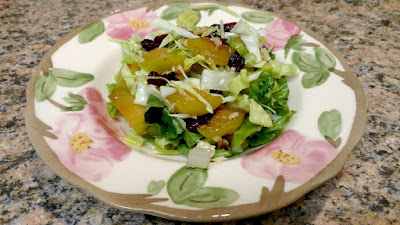
Recipe: Dish combines fresh fruit with dried cranberries, walnuts

of apricots and plums. (Photos: Debbie Arrington) |
Pluots can puzzle people. Sure, they're sweet-tart and crunchy, wonderful eaten fresh out of hand.
But what can you do with them?
Thanks to hybridizer Dave Wilson Nursery, dozens of pluots and close cousins apriums and plumcots are now available. Known as interspecific plums, these mixed varieties include plums and apricots in their parentage. But how that cross turns out can be amazingly different. That gives each variety unique characteristics.
Pluots range in skin color from pale yellow-green to darkest plum purple, often with contrasting flesh. The inherent blend of apricot and plum makes a wonderful jam as well as tarts and dessert fillings.
That sweet-tart-crunchy combo also is perfect for a fresh summer salad. The variety used for this recipe was Emerald Drop, which has very pretty yellow-green skin with tangy apricot-like flesh. But any pluot or aprium or plumcot would be tasty, too.

or aprium will do. |
Pluot salad
Makes 3 servings
Ingredients:

|
Comments
0 comments have been posted.Sacramento Digs Gardening to your inbox.
Sites We Like
Garden Checklist for week of Nov. 3
November still offers good weather for fall planting:
* If you haven't already, it's time to clean up the remains of summer. Pull faded annuals and vegetables. Prune dead or broken branches from trees.
* Now is the best time to plant most trees and shrubs. This gives them plenty of time for root development before spring growth. They also benefit from fall and winter rains.
* Set out cool-weather annuals such as pansies and snapdragons.
* Lettuce, cabbage and broccoli also can be planted now.
* Plant garlic and onions.
* Keep planting bulbs to spread out your spring bloom. Some possible suggestions: daffodils, crocuses, hyacinths, tulips, anemones and scillas.
* This is also a good time to seed wildflowers and plant such spring bloomers as sweet pea, sweet alyssum and bachelor buttons.
* Rake and compost leaves, but dispose of any diseased plant material. For example, if peach and nectarine trees showed signs of leaf curl this year, clean up under trees and dispose of those leaves instead of composting.
* Save dry stalks and seedpods from poppies and coneflowers for fall bouquets and holiday decorating.
* For holiday blooms indoors, plant paperwhite narcissus bulbs now. Fill a shallow bowl or dish with 2 inches of rocks or pebbles. Place bulbs in the dish with the root end nestled in the rocks. Add water until it just touches the bottom of the bulbs. Place the dish in a sunny window. Add water as needed.
* Give your azaleas, gardenias and camellias a boost with chelated iron.
* For larger blooms, pinch off some camellia buds.
* Prune non-flowering trees and shrubs while dormant.
* To help prevent leaf curl, apply a copper fungicide spray to peach and nectarine trees after they lose their leaves this month. Leaf curl, which shows up in the spring, is caused by a fungus that winters as spores on the limbs and around the tree in fallen leaves. Sprays are most effective now.